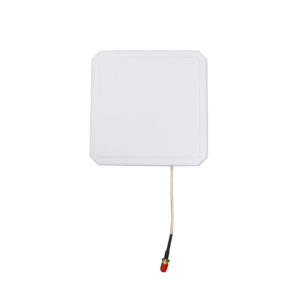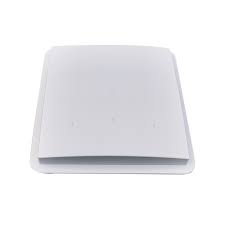


RFID Antenna
RFID UHF (Ultra-High Frequency) antennas are designed to operate within the UHF frequency range, typically from 860 MHz to 960 MHz. These antennas are a crucial part of UHF RFID systems, enabling communication between RFID readers and RFID tags.
Description:
- Frequency Range: UHF RFID operates in the frequency range of 860 MHz to 960 MHz, ensuring broad compatibility across regions.
- Circular Polarization: UHF RFID antennas typically use circular polarization, which enhances read performance regardless of tag orientation.
- Antenna Gain: Measured in decibels (dBi), gain determines the antenna’s ability to focus energy. Common UHF RFID antennas have gains between 6 dBi and 12 dBi.
- Beamwidth: Defines the angular width of the antenna’s radiation pattern. UHF RFID antennas typically have beamwidths ranging from 30 to 90 degrees, balancing range and coverage area.
- Power Handling Capacity: Determines the maximum power the antenna can handle without damage, ensuring proper matching with the RFID reader’s output power.
Specifications:
| Specification | Details |
|---|---|
| Air Interface Protocol | ISO 18000-6C (EPC Class 1 Gen 2), ISO 18000-6B |
| Protection Grade | IP 54 |
| Frequency Band | 865MHz - 867MHz (India), 902MHz - 928MHz (USA), 865MHz - 868MHz (Europe) |
| Frequency Hopping | FHSS |
| Gain | 12 dBi, 9 dBi, 8 dBi |
| Operating Mode | Answer, Active, Trigger |
| Polarization | Circular, Linear |
| Input Power | 50 |
| Dimensions (L x W x D) | 445 x 445 x 55 mm |
| Net Weight | 2.5 kg |
| Gross Weight | 4 kg |
| Operating Temperature | -40℃ to +70℃ |
| Humidity | 5-95% non-condensing |
| Housing Material | ABS chassis |
| Connector | N-Female |


